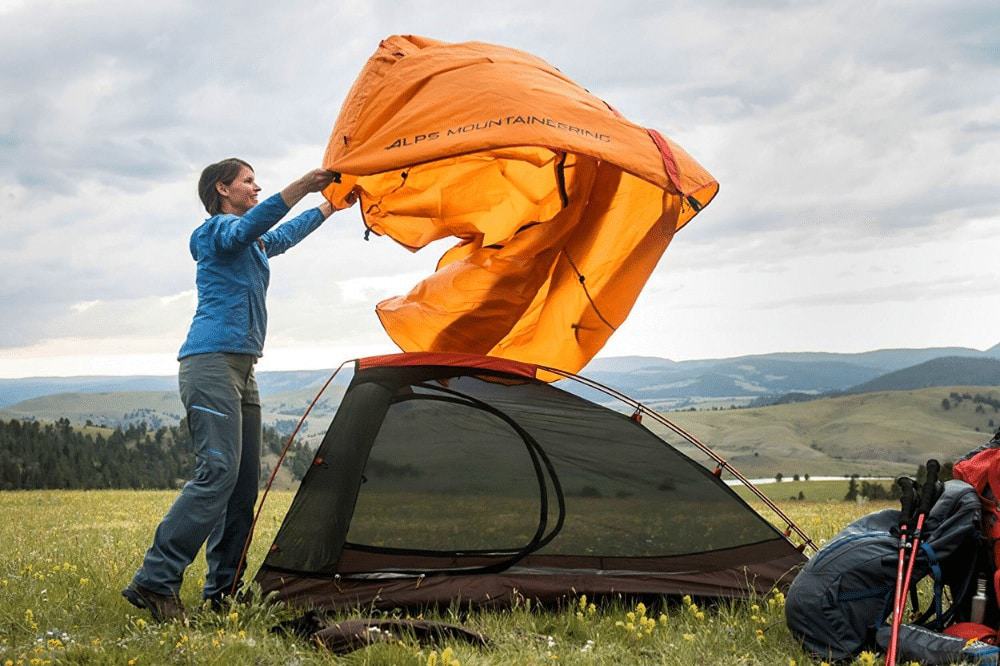There is nothing worse than waking up in your tent in the middle of the night because you feel water dripping onto you from the roof. Dampness inside of a tent is a common issue amongst campers and ultralight hikers. Thankfully there are some good ways to prevent the problem and ensure a good night’s rest in the great outdoors!
So, how to keep your tent dry inside and prevent condensation?
- Invest In A Well-Ventilated Tent
- Keep The Tent Doors Open
- Stretch The Fly-Sheet Out Correctly
- A Ground Sheet Helps To Keep A Tent Dry
- Avoid Sleeping Too Warmly
- Choose Your Campsite Wisely
- Dry The Tent And Sleeping Bag Out Well
- Do Not Cook Or Boil Water In A Tent
- Use A Dehumidifier
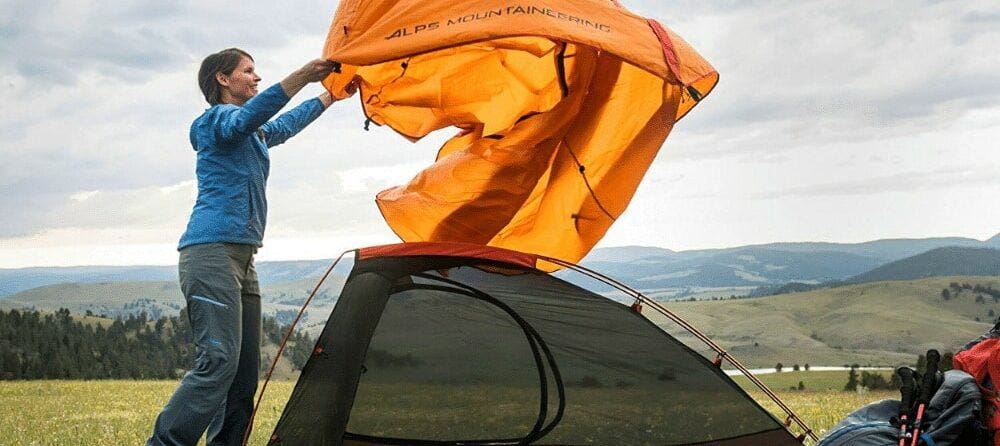
We share advice on how to stay dry inside your tent all year round. In some cases, condensation is inevitable, even in tents with excellent ventilation. Knowing how to deal with condensation issues inside your tent effectively makes a huge difference, especially during winter adventures!
Here’s how to prevent condensation in a tent:
1. Invest In A Well-Ventilated Tent To Prevent Condensation
Water condenses inside a tent where there is a temperature difference between the air outside and the air inside the tent. Tents are not designed to be an insulated bubbles of warm air. Rather, they are meant to protect you from the wind, rain, and snow.
While we sleep, we breathe out water vapor. The average person exhales about 40g of water vapor while sleeping. That is a significant amount of humidity being released into the air!
In addition to breathing out moisture, our bodies give off water vapor while we sleep (even when we aren’t sweating). Any damp things, like towels or hiking boots, also contribute moisture to the air inside the tent.
If the warm, moist air has no way of getting out of the tent, water droplets condense on the cold roof of the tent and on the outside of your sleeping bag. A well-ventilated tent gives the moist air a way to escape.
An outstanding double-walled tent with features to overcome condensation issues is the Big Agnes Copper Spur HV UL1. It is a three-season tent with great versatility and features that maximize ventilation.
If you are more keen on a four-season tent, first read our comparison of three-season and four-season tents!
Single-Walled Vs. Double-Walled Tents
Single-walled tents are constructed from one layer of fabric. They are lightweight, quick and simple to pitch, and waterproof. However, because they are made from coated, non-breathable fabric, ventilation in single-walled tents is not great, leading to issues with condensation.
Double-walled tents consist of an inner tent body with a fly sheet that goes over the top. The inner body of the tent is made from breathable fabric, but it is not waterproof. The flysheet is waterproof, but it is not breathable.
Double-walled tents are better for preventing condensation because they can be set up to maximize ventilation and minimize moisture. In cold, dry climates, single-walled tents work well, but in more humid, rainy climates, a double-walled tent is recommended.
Check out our in-depth comparison of single and double-walled tents.
Condensation Is More Of An Issue In Smaller Tents
The larger a tent is, the greater the volume of air inside and the lower the chances of condensation being a problem. Most often, condensation is an issue inside small one or two-man tents.
Consider The Tent Fabric
Old-school canvas tents are breathable and prevent condensation inside, but they are very heavy, so they are only practical for camping with a vehicle. Tents designed for backpacking are ultra-light, but the fabric is not breathable, so condensation is more of a problem.
Find out what the best fabrics and materials are for tents.
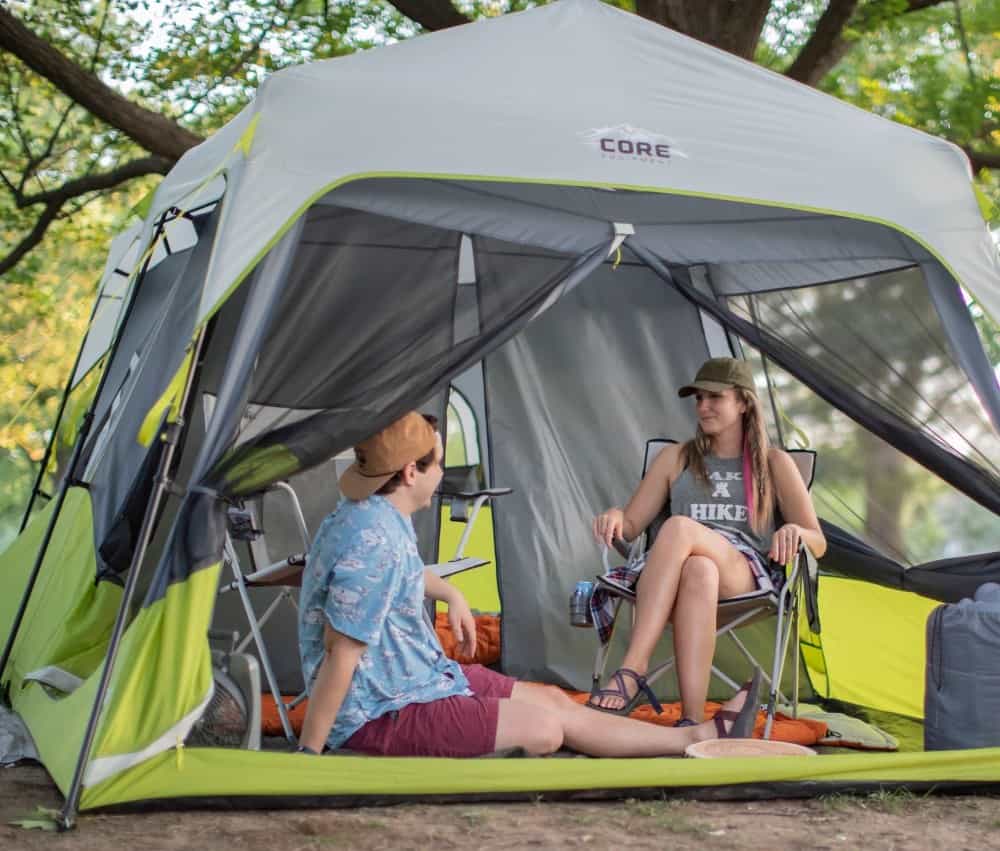
2. Keep The Tent Doors Open When Possible
During the day, it is good to keep the doors and windows of the tent open. This will ensure a breeze through the tent and will allow any moisture in the tent to evaporate and get out.
At night, zip the inner door shut to keep most of the wind out, but keep the doors and windows of the flysheet rolled up so that there is good ventilation through the tent. Obviously, this is only practical in a double-walled tent when it is not raining or snowing.
3. Stretch The Fly-Sheet Out Correctly To Avoid Condensation
You should only use a fly sheet if there is a good chance of rain during the night. If you can avoid putting the flysheet over the tent, it will go a long way to improve ventilation and avoid condensation inside the tent.
When you use a flysheet, it is crucial to stretch it out properly. The flysheet should not touch the inner body of the tent.
Use the guy ropes to stake the flysheet outwards, away from the tent. Condensation will form on the flysheet, but if it slopes away from the tent, the water drops will run off and not wet it.
Make sure that the flysheet is tensioned properly with no creases. As nylon gets wet, it stretches, so you may need to re-tension the flysheet as it gets wetter.
Tents with a fly sheet that functions as an external vestibule can be more prone to condensation when the vestibule is fully closed. Instead, stake the flaps of the flysheet out to allow better airflow through the tent.
4. A Ground Sheet Helps To Keep A Tent Dry
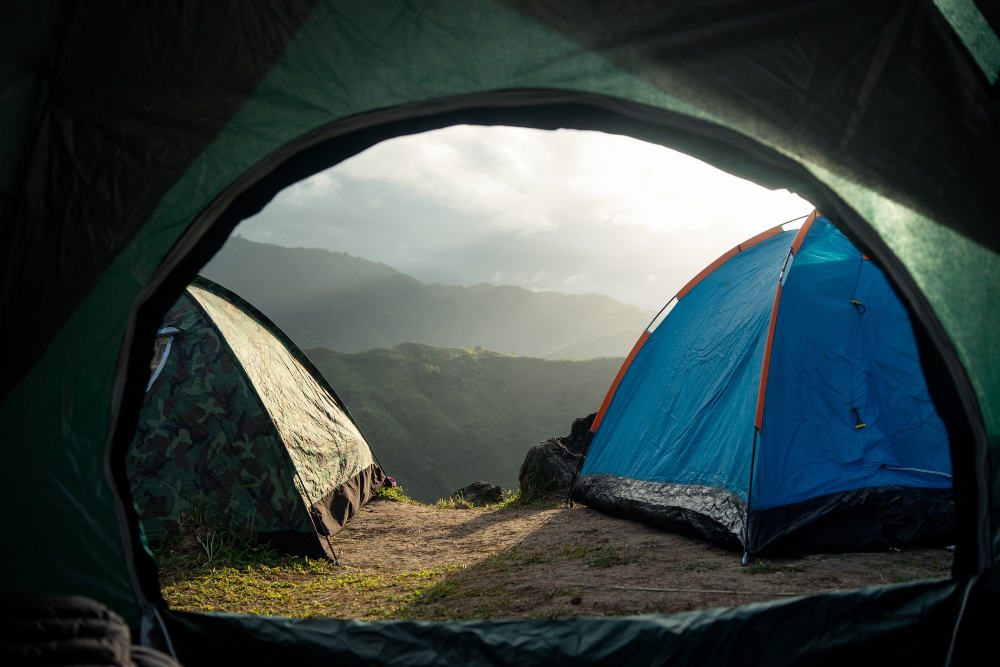
Moisture from the ground rises into the tent at night, contributing to humidity levels and condensation inside the tent. To prevent issues with condensation, set your tent up on top of a waterproof groundsheet.
Make sure that the flysheet is staked out past the edges of the groundsheet. You do not want water drops coming off the flysheet, landing on the groundsheet, and pooling under your tent!
5. Avoid Sleeping Too Warmly To Prevent Tent Condensation
Being too cozy inside your tent can exacerbate the problem of condensation inside the tent. Wearing unnecessary layers while you sleep increases your body temperature, so you release more moisture into the air.
Sleeping in a bag that is too warm leads to the same issue. To avoid condensation inside your tent, do not wear extra clothes when it is not cold enough to warrant them, and use a sleeping bag with an appropriate temperature rating for the conditions you are camping in.
6. Choose Your Campsite Wisely
Where you pitch your tent influences condensation inside the tent. Do not pitch your tent in a depression in the ground where cold air collects. Avoid pitching your tent on green grass or near a body of water.
Look for a campsite at a slightly higher elevation than a lake, pond, or river. Pay attention to the direction the wind is blowing and pitch the tent so that there is a breeze through both doors.
Tree roots absorb a lot of soil moisture, so setting up camp under a big tree is a good idea to avoid condensation inside the tent. It also reduces the amount of dew that forms on the outside of the tent.
Related: Looking for a tent that will keep you dry in bad weather? Find out what the best tent for heavy rain and bad weather is.
7. Dry The Tent And Sleeping Bag Out Well
Hang your sleeping bag out to dry in a sunny spot. Letting it dry, even for a short time, makes a huge difference in humidity inside the tent.
Use a microfibre towel or a chamois to wipe as much moisture as you can from the inside of your tent and the flysheet.
If you need to hit the trail early and do not get time to dry your tent and sleeping bag in the morning, hang them out to dry while you stop along the trail for lunch and snack breaks.
Check our our tips on how to dry a tent most efficiently.
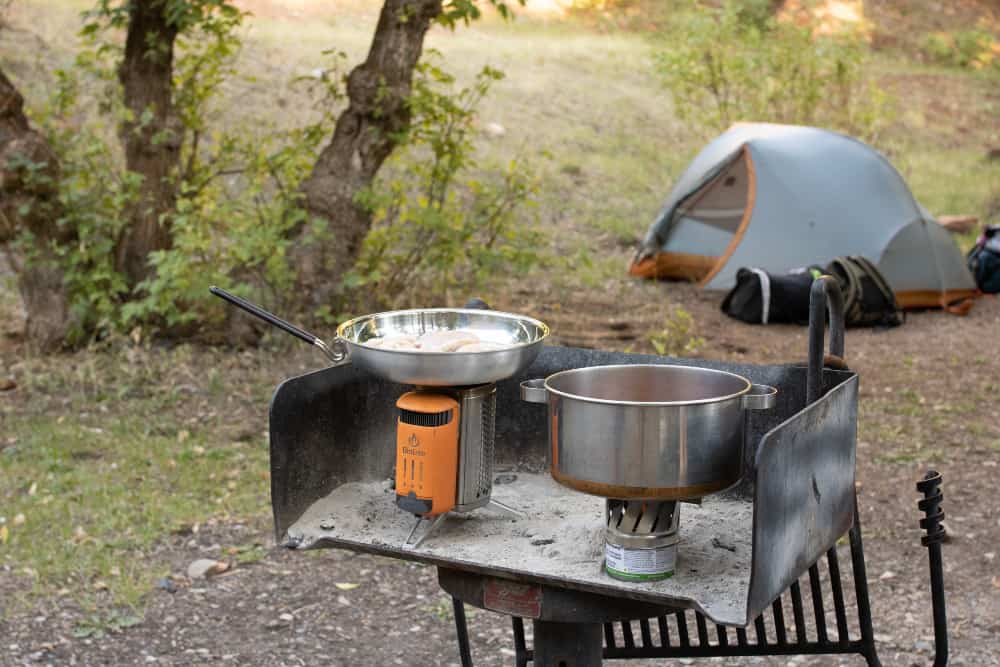
8. Do Not Cook Or Boil Water In A Tent
Heating water or food up on a gas cooker releases lots of moisture into the air. Doing so inside your tent will lead to condensations issues inside the tent!
9. Use A Dehumidifier To Prevent Condensation In A Tent
Using a small dehumidifier inside your tent is a brilliant way to overcome condensation problems. The Afloia Mini Portable Dehumidifier is compact, lightweight, and cordless. It has the capacity to remove 100g of water vapor from the air daily.
It only takes 2 hours to charge this dehumidifier, and it lasts up to 14 days on a single charge – perfect for longer hiking trips. Unfortunately, it is another object that takes up space in your backpack, but there must be some compromise to avoid dampness in your tent!
Conclusion
Preventing condensation inside your tent is possible if you remember the expert tips in this article. You are sure to enjoy many happy, dry nights in your tent out in the wilderness.
